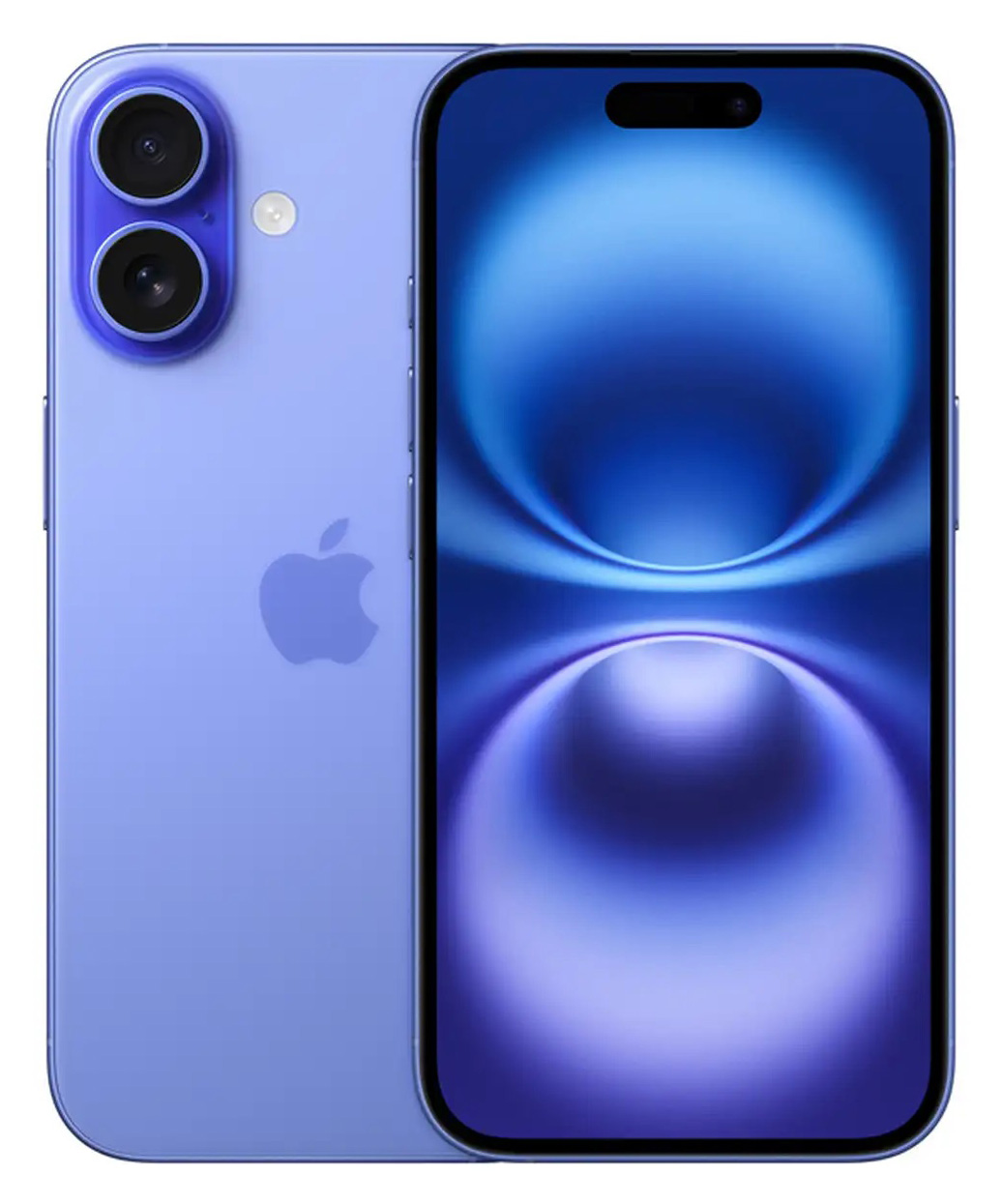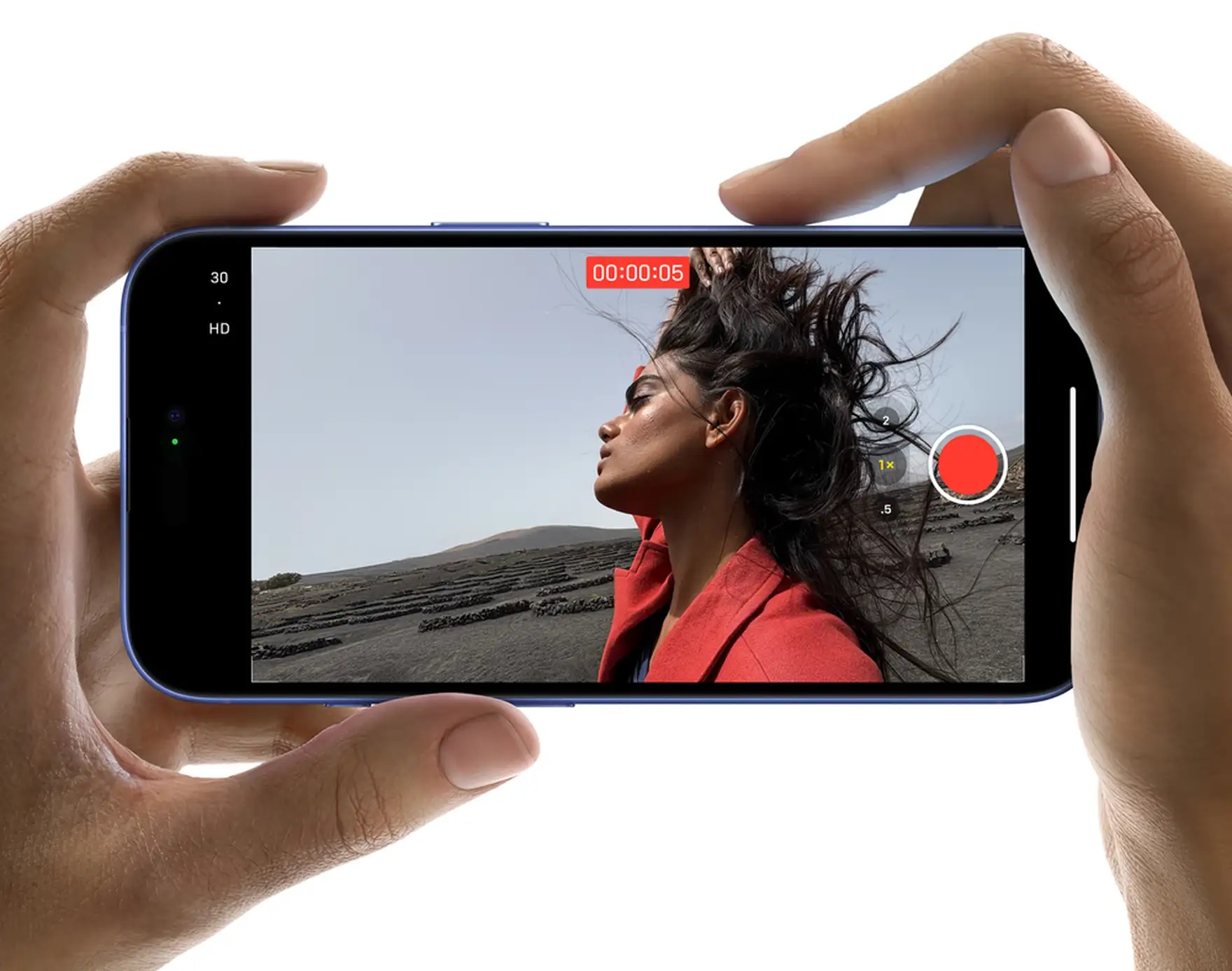As with previous models, in the case of the iPhone 16, Apple is innovating, but at the same time testing the patience of the brand’s fans and also making sure that the basic model does not cannibalize the Pro models.
The dimensions of the smartphone are dictated by the diagonal of the 6.1″ display, while Apple does not make a big deal out of the fact that there is a border of approximately 2 mm around the entire display. Although reviewers will raise their eyebrows at this, users mostly appreciate it, because when holding the palm or the bellies of the fingers of the left hand do not interfere with the surface sensing the touches and gestures. Compared to last year’s model, a button has been added on the left side that activates the Camera application after the first press and takes a picture. For the “action” button on the left side, you can define the activation of the function that you often use. We hope that users will not have to use the function SOS satellite communication from places outside the coverage of mobile networks.

The design typical of Apple smartphones with a flat display and relatively sharp peripheral edges has also been preserved. Nowadays, it is a bit conservative, but still elegant, with a touch of luxury. The oval element around the selfie camera lens, called Dynamic Island in marketing, has proven itself. Looking at it from an oblique angle, you will find that it also has a smaller oval hole for a sensor for safe and reliable Face ID authentication, which uses facial biometrics.
The peripheral frame of the smartphone is metal, with a surface treatment of the corresponding color shade. The back wall must be made of non-metallic material for inductive charging, and the luxury material requirements for the flagship model dictate that it must be glass. Apple’s designers correctly bet on matte glass, which allows for a more reliable hold. The platform with rounded corners and two rear camera lenses protrudes from the back wall by about a millimeter and is made of translucent material in the color of the back wall. The lenses also protrude from the platform by less than a millimeter. The lenses are under durable sapphire glasses, so there is certainly no risk of scratching during normal use. In terms of water and dust resistance, it meets the IP68 standard. Users can use the slot for a classic nano SIM card in combination with an eSIM.
The OLED Super Retina XDR display is traditionally one of the best you’ll find in smartphones. The brightness of 1000 nits is enough by itself to display data even on a sunny day. With high ambient brightness, the iPhone 16 can briefly increase the brightness of the display up to 2000 nits. The resolution of 1179 × 2556 pixels with a diagonal of 6.1 inches is not too impressive from a marketing point of view, but in practice it is more than sufficient. With a refresh rate of 60 Hz and the absence of AlwaysOn on basic models, Apple is testing the patience of its fans. Only the Pro models have a higher frequency of 120 Hz, which is standard for Android smartphones even in the lower middle class. Hence the remark in the introduction about cannibalization. The oleophobic layer tries to resist smearing the cover glass with grease from fingerprints, and it succeeds to a certain extent. I have to praise the automatic backlight brightness control. The advantage of the OLED display is fully manifested when setting the dark mode.
The heart of the new iPhone 16 is the A18 Bionic chipset with a 6-core processor. Two cores are intended for tasks requiring high performance, and four energy-efficient cores ensure so-called operational tasks. The chip also has a 5-core graphics processor and a 16-core Neural engine for hardware support of artificial intelligence and calculations based on neural networks. In terms of hardware, the new iPhone is ready for Apple Intelligence, but it is not yet available for our region. The performance of the processor-graphics tandem is more than sufficient in Apple’s software-optimized ecosystem. The smartphone does not get too hot even under heavy load.
On a single charge, the iPhone 16 will last you two days of normal use. The package contains only a cable with USB-C connectors on both ends. Charging to full capacity takes around 100 minutes, as between 80 and 100% charging slows down significantly to maximize battery life. To extend the life of the battery as much as possible, you can set it to only charge up to 80% capacity. 25W MagSafe wireless charging is also supported, or 15W if you use a Qi standard charger. The stereo sound is excellent, with an even presentation of the entire spectrum, with the exception of the bass, of course. In the lower mids around 200 Hz, the reproduction is surprisingly good considering the volume of the enclosure.

The main slightly wide-angle camera with effective optical stabilization has a lens with an aperture of f/1.6 and a sensor with a resolution of 48 megapixels. You will appreciate the optical stabilization especially in the so-called action mode, when you can film dynamic scenes while moving. However, the action mode provides high-quality images only in good lighting conditions, for example on a bright sunny day. At 2× zoom, the cut-out from this sensor is used in full resolution. In Pro RAW mode, you can use the full resolution of the main camera’s sensor, i.e. 48 Mpx. Image files in this mode are around 70 MB and you can process them in a suitable program, for example Adobe Lightroom. The ultra-wide-angle camera has a lens with a 120° field of view, f/2.4 aperture and a 12 Mpx sensor. This lens does not need stabilization in principle. A big added value is the hardware button for controlling the camera, which has two positions. With a light press, a zoom scale will appear, which you can adjust by sliding your finger across the surface of the button. With a double short press, you can switch the functions controlled by this button, for example exposure correction, background blur or style selection. After pressing all the way down, the picture is taken. Press all the way down and hold to start recording a short video that is recorded while the button is held down. The first time you press it, you will notice that the button has a haptic response.
During the day in good light, images from the iPhone traditionally have vivid, but not overly saturated colors. If the lighting conditions require it, HDR is also automatically applied to dynamic scenes. The shots in strong backlight are also very good. They have excellent brightness and color dynamics and well-rendered details even in the shadows. I have to praise the same color rendering from both cameras, which you will appreciate, especially if you switch the zoom while shooting videos. Artificial background blur in Portrait mode works very well and can be applied to general scenes, not just shots with a human face. Movie mode automatically focuses on faces and artificially blurs the background. I also have to praise the relatively high-quality macro shots.
The main camera takes excellent photos even in the evening and at night. When the flash is off, night mode is automatically activated. In artificial lighting, a typical exposure time in this mode is one second, in deep twilight without street lighting, even 3 seconds. To be sure, I took three consecutive shots in night mode each time, but except in almost complete darkness, this is not necessary. Even the best optical stabilization would not last for such a long time. The “night” shutter works by taking a pilot shot first, followed by a series of additional shots that add detail. Visually, the brightness of the preview on the display increases during the shot. Of course, you have to hold the smartphone as stable as possible. Even in low street lighting, most shots are brilliantly sharp and with relatively faithful color reproduction. When photographing in the evening, the iPhone 16 relies on optical stabilization in both normal and night mode and prefers to set a longer exposure time rather than a higher ISO, which would introduce more noise into the image. This should be taken care of when shooting moving objects. 4K video recording is supported at 60 fps and 1080p slow-motion video recording at 120 or 240 frames per second. The front camera with a resolution of 12 Mpx also takes very good photos. I recommend trying out all of her portrait options. In cooperation with the IR camera, it allows you to “magic” with the depth of field of selfie portraits. You can also record 3D videos for Apple Vision Pro.
PROS, CONS:
+ Excellent display, very high-quality camera, performance, design and construction processing
– 60 Hz display, absence of AlwaysOn, slow charging
PARAMETERS:
Processor: Six-core Apple A18, 5-core GPU, 16-core NPU, 3 nm process; 8 GB RAM, storage capacity: 128 GB; Super Retina XDR OLED display, 6.1 inches, resolution 1179 × 2556 px (460 ppi), aspect ratio 19.5:9, 60 Hz, HDR 10, 1000 nits (2000 max.); camera: main 48 Mpx, 26 mm f/1.6 + ultra-wide 120˚, 12 Mpx, 13 mm, f/2.2, front camera 12 Mpx, 23 mm, f/1.9 + 3D biometric sensor; communication: 5G, Wi-Fi 7, bluetooth 5.3, NFC; battery 3561 mAh; operating system iOS 18; dimensions: 147.6 × 71.6 × 7.8 mm, weight: 170 g
Cena: 949 € (128 GB)
Borrowed by: Slovak Telekom
Source: www.nextech.sk


